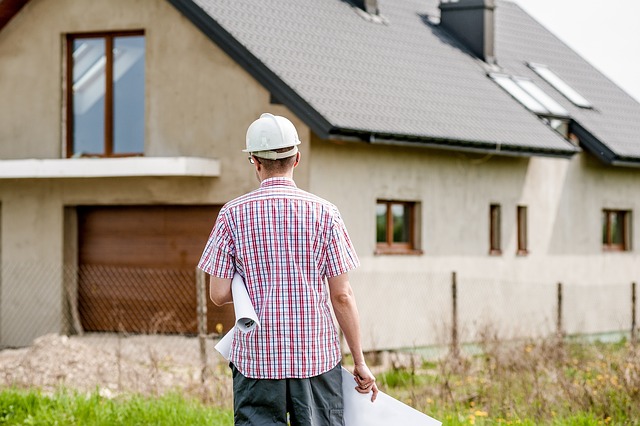When considering window replacements as part of home repair and maintenance, it's crucial to evaluate your windows for signs of aging that can affect comfort and energy efficiency, such as condensation, drafts, cold spots, and significant fading. Replacing old windows with new ones that feature advanced technologies like double or triple glazing, improved insulation, and durable frames can lead to a more comfortable living space and significantly lower heating and cooling costs. Homeowners should consider factors such as the age of their current windows, repair history, material condition, local climate, and how their home is used when deciding if replacement is necessary. A strategic window replacement plan, executed with care and professional expertise, not only enhances energy efficiency but also potentially increases property value. This process, when done correctly with high-quality materials and precise installation, can result in substantial savings on utilities and a noticeable improvement in your home's appearance and comfort.
Upgrading your windows can significantly transform your living space’s comfort, energy efficiency, and aesthetic appeal. This article delves into the pivotal process of window replacement and installation as a key aspect of home repair and maintenance. We’ll explore how to identify when it’s time for new windows, the step-by-step installation process, and the energy-saving benefits they offer. By examining materials, features, and long-term financial implications, homeowners can make informed decisions that contribute to a more efficient and enjoyable home environment.
- Assessing the Need for Window Replacement: Signs, Benefits, and Considerations
- The Process of Window Installation: Steps, Best Practices, and Professional Guidance
- Enhancing Home Energy Efficiency with New Windows: Materials, Features, and Long-Term Savings
Assessing the Need for Window Replacement: Signs, Benefits, and Considerations

When considering window replacement as part of home repair and maintenance, it’s crucial to evaluate the condition of your existing windows. Aging windows can lead to inefficiencies in energy usage and comfort within your home. Look for visible signs such as condensation between glass panes, drafts or cold spots near the windows, difficulty in opening or closing, and significant fading of carpets or furnishings. These indicators may suggest that your current windows are not performing optimally. Window replacements offer numerous benefits beyond enhancing comfort; they can significantly improve energy efficiency by reducing heat loss during winter and heat gain in summer, leading to potential savings on heating and cooling bills. Additionally, modern windows often come with advanced features like double or triple glazing, better insulation, and more robust frames, which contribute to a quieter living environment and increased property value. When assessing the need for window replacement, consider factors such as the age of your current windows, the frequency of repairs needed, the window’s material and condition, local climate patterns, and any changes in your home usage or preferences. Properly maintained windows can last for decades, but when they start to compromise the comfort, safety, and energy efficiency of your home, it may be time to explore window replacement options as a key aspect of home repair and maintenance.
The Process of Window Installation: Steps, Best Practices, and Professional Guidance

When undertaking window replacement or installation as part of home repair and maintenance, it’s crucial to follow a systematic approach to ensure the windows function optimally and provide lasting performance. The process begins with selecting the appropriate window style and material that aligns with your home’s architectural design and your personal preferences for energy efficiency and durability. Once the new windows are chosen, the installation can proceed according to these steps: first, the old windows are carefully removed, taking note of their placement to ensure the new units fit precisely; second, any necessary repairs to the window frame or surrounding structure are completed to maintain structural integrity; third, the new windows are prepared for installation with a focus on aligning them correctly within the opening; fourth, the windows are secured in place, and sealing is applied to prevent air leaks and moisture intrusion; fifth, the final touches, such as trimming and caulking, are added to complete the installation and enhance the window’s performance and aesthetic appeal.
Throughout this process, adherence to best practices is paramount. This includes using high-quality materials and tools, precise measurements, and a methodical approach to avoid damage to the surrounding area. Professional guidance is often invaluable, as experienced installers can navigate potential challenges, such as dealing with unique window designs or addressing structural issues that may arise during the removal of old windows. Homeowners looking to undertake this task themselves should consider seeking expert advice or hiring professionals for complex installations. By doing so, they can ensure that their investment in new windows translates into energy savings, improved home comfort, and a significant enhancement to their property’s curb appeal. Professional installation services not only provide peace of mind but also often include warranties or guarantees, further safeguarding your home repair and maintenance investments.
Enhancing Home Energy Efficiency with New Windows: Materials, Features, and Long-Term Savings

When considering home repair and maintenance, window replacement emerges as a pivotal strategy to bolster your residence’s energy efficiency. The choice of materials plays a crucial role in this endeavor; high-performance options like vinyl or fiberglass frames, coupled with double or triple-pane glass, can significantly reduce heat transfer, keeping homes warmer in winter and cooler in summer. These advanced window systems often incorporate weatherstripping and insulated spacers to minimize air leaks, ensuring a tighter seal that helps maintain consistent indoor temperatures.
Moreover, the integration of energy-efficient features such as low-emissivity (Low-E) coatings and argon gas fills further enhances performance. Low-E coatings reflect infrared light while allowing visible light to pass through, reducing solar heat gain during warm months yet retaining interior heat during cooler periods. Argon gas, a non-reactive inert gas, between the panes of glass provides better thermal insulation compared to air, further contributing to energy savings. Homeowners opting for these windows can expect long-term benefits, including reduced energy consumption, lower utility bills, and a more comfortable living environment. The initial investment in such high-quality window systems is often offset by the energy savings over time, making them a sound choice for those prioritizing home repair and maintenance with an eye on sustainable living practices.
homeowners considering window replacement as a means to enhance their home’s energy efficiency and overall aesthetic should thoroughly assess their current windows for signs of wear or inefficiency. By understanding the benefits and considerations involved, and by following professional guidance during installation, homeowners can ensure a seamless transition to more efficient windows. The process not only improves thermal performance but also contributes significantly to reducing energy costs over time. For those committed to home repair and maintenance, this upgrade is both a short-term improvement project and a long-term investment in the comfort and value of their property.
